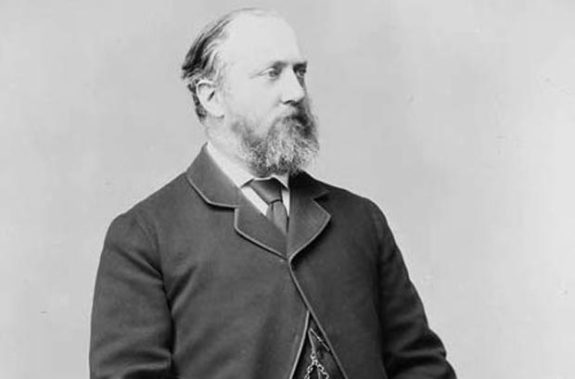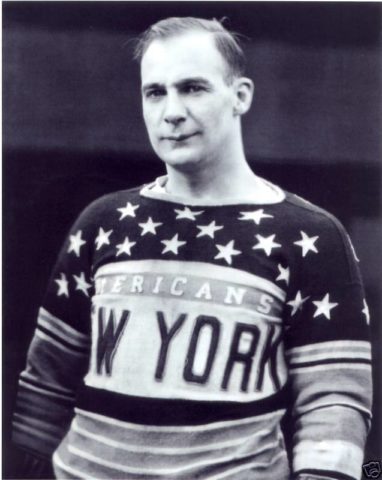Last Sunday was supposed to be the playing of the Canadian Football League’s championship. Arguably the second-most hallowed piece of hardware in Canadian sport, the Grey Cup possesses its own fantastic history, having been awarded every November since 1919. Grey Cup Sunday has become a tradition in Canada, with fans regularly packing stadiums in traditional team colors in an attempt to see their team lift the iconic trophy.
The most storied trophy in Canadian football and the Stanley Cup coincidentally share a fair bit of history. The two trophies and the sports they represent have always been strangely intertwined, whether directly or indirectly.
The Noble Connection
Both the Grey Cup and the Stanley Cup possess extremely noble origins. The Stanley Cup, of course, was donated to the National Hockey League in 1893 by Lord Stanley of Preston, then the Governor General of Canada. Lord Stanley himself was a ravenous hockey fan and felt strongly disappointed that there was no trophy awarded to the best club in what was then the Dominion of Canada.

“I have for sometime been thinking that it would be a good thing if there were a challenge cup which should be held from year to year by the champion hockey team in the Dominion [of Canada].”
Lord Stanley of Preston on hockey in Canada and the lack of a trophy for the champion.
A Second Choice
Like its hockey counterpart, the CFL’s Grey Cup was similarly donated by a Governor General of Canada, Sir Albert Grey, the 4th Earl Grey. Attempting to capitalize on the notoriety of the Stanley Cup, Grey sought to donate a trophy for which the amateur hockey clubs could compete (as only professional clubs could win the Stanley Cup). Unfortunately, he was beaten to the punch by Sir H. Montague Allan, a prominent Montréal businessman and the chairman of the Allan Steamship Line. The Allan Cup is now contested between the top senior amateur hockey clubs across Canada.
Because he had lost out on the opportunity to get his name on a hockey trophy, Grey decided to donate one to Canada’s second most popular sport at the time, rugby. Not only would Grey’s trophy become quasi-mystical in its own right, but the sport to which he donated it would evolve into Canadian football.
Conacher’s Cups
Not only do the histories of the two trophies mirror each other, but there are also direct connections between the two through athletes and owners themselves. A select few NHL players and owners have managed to win both trophies in various capacities. Only three have managed to win both trophies as players, where other NHL personalities became CFL executives or part owners.
The most decorated player to win both trophies was star athlete Lionel “Big Train” Conacher. A football player first, he was signed by the Toronto Argonauts in 1920 and helped them win the Grey Cup against the Edmonton Eskimos the following season. The 1921 Grey Cup was the 9th edition of the Canadian football championship and was also the first time the game was contested including a team from outside the Greater Toronto-Hamilton Metro area.

Conacher himself dominated the game, single-handedly scoring 15 of Toronto’s 23 points and setting a Grey Cup single-game record. Scoring two touchdowns and kicking a field goal to go with two rouge points, the Big Train actually left the game at the end of the third quarter to get to a hockey game with his Toronto Aura Lee club.
The Big Train Hits the Ice
Although Conacher didn’t start skating until age 16, he nevertheless became a highly sought-after prospect, receiving offers from both the Toronto St. Patricks and the Montréal Canadiens. Instead, he chose to capitalize on his amateur athlete status and attend Bellefonte Academy in Pittsburgh, where he became the inaugural captain of the city’s NHL club, scoring the first goal in the club’s history. Shortly thereafter, his player rights were acquired by the Chicago Black Hawks.
Conacher became instrumental to the Black Hawks’ first Stanley Cup championship in 1934 and received the second-most votes for the Hart Trophy as league MVP. The following season, he suited up for the Montréal Maroons and helped them win another Stanley Cup.
Cross-Owner
Some NHL personalities’ Grey Cup connections are more indirect, as some have forayed into the realm of team ownership. Wayne Gretzky, the greatest hockey player of all time and the holder of nearly every NHL scoring record in the book, became a minority owner of the Toronto Argonauts in 1991 alongside actor John Candy and majority holder Bruce McNall.
Gretzky and Candy’s ownership helped attract star NFL player Raghib “Rocket” Ismail and saw the Argos win the 1991 Grey Cup against the Calgary Stampeders. Gretzky attended the game despite playing the night before and preparing to play the night after.
What’s also known is Gretzky’s NHL pedigree. Winner of four Stanley Cups with the Oilers in the 80s and 90s, his championships only helped cement his status as the greatest player of all time. Gretzky sold his stake in the Argos in 1994 and retired from hockey five years later to a standing ovation at Madison Square Garden and a place at the top of the NHL mountain.

The two trophies most connected to sport in Canada are also connected to each other in more ways than one. It’s a major dissapointment that Canada never got to have a Grey Cup celebration this year. Here’s to 2021, and hopefully another connection between Canada’s two national pastimes.